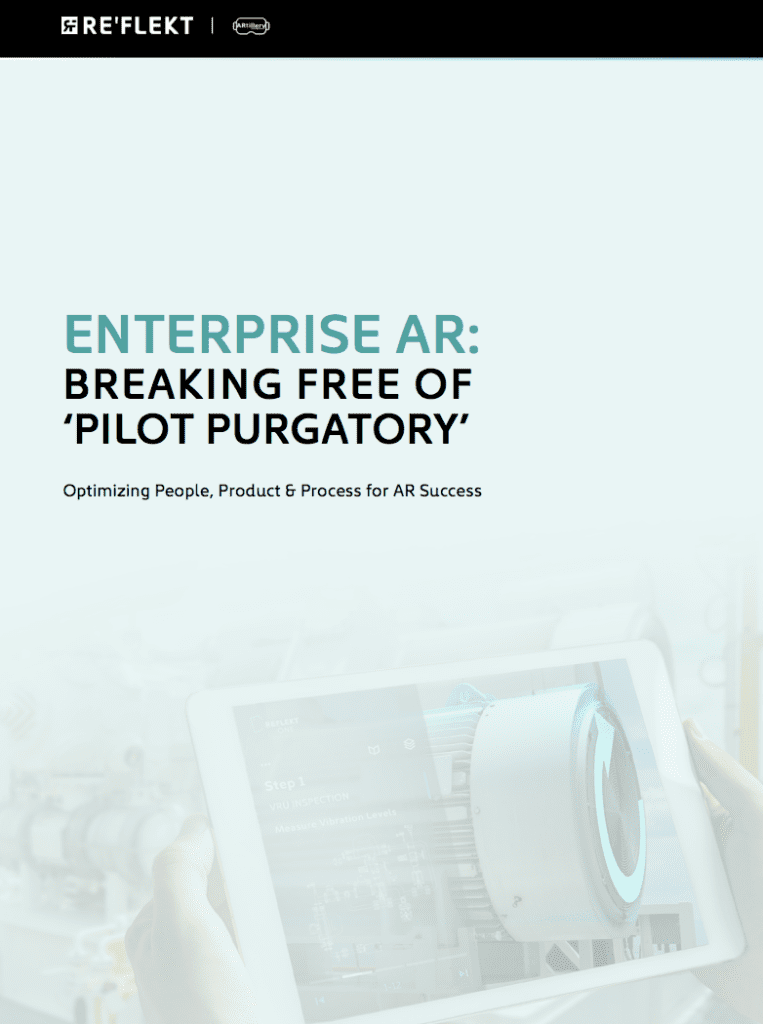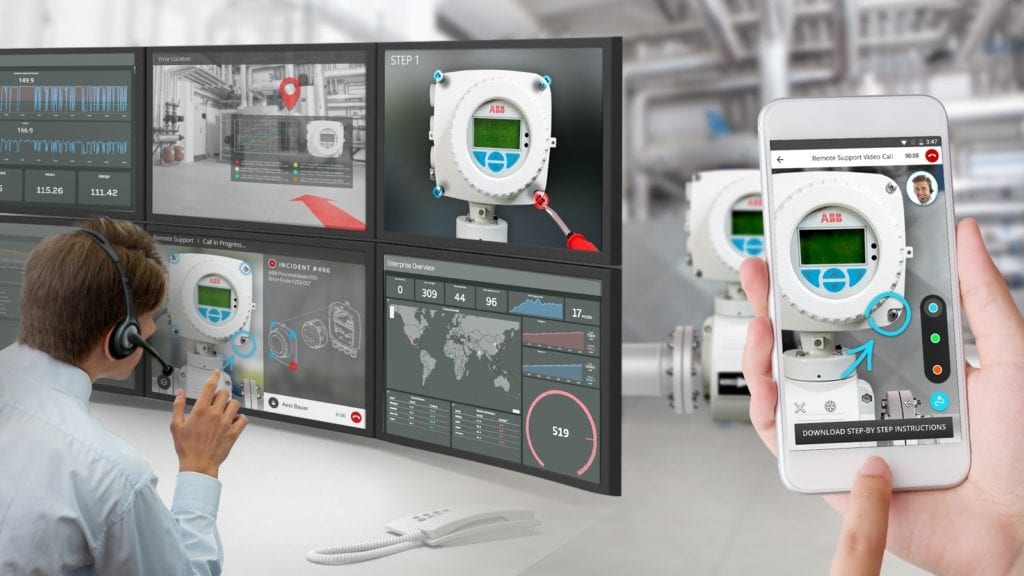Editor’s note: Below, Dirk Schart draws from his recently published e-book about smart AR adoption strategies to help service leaders determine whether AR is the best solution for their businesses. To learn more, read the full e-book here.
Practical applications of augmented reality have existed for more than a decade. But for those who lead service organizations, the exciting technology raises a big question: How can I get started with AR?
It’s a common question about any early-stage technology that’s maturing from test environments to real-world business use cases. While some business leaders are content to experiment with AR, others want to use the technology to solve a specific problem. Whatever course your organization pursues, you’d be smart to ask some important questions before getting started—including if AR is, in fact, the best solution. Below is a guide to develop an AR strategy that makes sense for your business.
Step 1: Start with the Problem
I work with a lot of company leaders who are curious whether AR could solve difficult problems. Occasionally, companies have already purchased expensive AR headsets and ask how they can deploy them in the field. They’re clearly excited about AR, which is understandable, but too often they’ve made up their minds that AR is the best solution without considering other options.
For example, one of our first customers, Land Rover, wanted to help its mechanics reduce errors and costs while fixing faulty fuel return lines in its Range Rover models. It’s a complex repair job that risks expensive damages to the engine bay. The automaker tried instructional videos and PDF manuals, but neither option solved the problem.
With our partner Bosch, which has extensive experience working with the automotive industry to improve workflows and processes, we built a visual AR guide for iPads that displayed work instructions onto the repair area and guided mechanics through the job, step by step. The project was a success, resulting in lower error rates and happier mechanics. We identified a problem, considered the work environment, and sought input from mechanics who would use the solution. There’s no better way to get started on a new technology project.
How can you identify a possible application for AR in your business? Check where you have repeating errors, or where employees waste time searching for accurate information—whether training manuals or assistance from expert colleagues. Enterprises have huge amounts of data and information and their disposal to solve problems, but it’s not always available in a meaningful format.
Step 2: Overcome Environmental (and Workforce) Resistance
Before you think about how AR could solve a nagging problem, consider your work environment. Is it on-site support or remote work in the field? What kind of devices do your employees already use? You might not need to purchase expensive AR glasses, if most of your techs already carry mobile devices that support AR applications (and are approved by IT).
SEE ALSO: Bringing New Tech to the Field? Don’t Stay on the Sidelines.
Also, consider your workforce. How do your employees handle change? How are they trained on new tools and technologies? Change management is a critical step when launching a new AR project. If you have the perfect problem for AR to solve, chances are adoption won’t be successful if you don’t convince management and build bridges to the employees in the field who will use the new tech.
Step 3: Draft a Solution
So, you have identified a problem that AR could solve, checked the environment and secured buy-in from the workforce. Next it’s time to develop a solution. Ask yourself: How could AR make an employee’s job easier? I have three factors in mind when suggesting a solution: simplicity, frequency and satisfaction.
- Simplicity: AR should make a job easier and faster to complete
- Frequency: AR should be used frequently. If it’s a niche solution that’s rarely used, that’s a sign that AR probably isn’t the best solution.
- Satisfaction: A successful AR solution will improve both employee and customer satisfaction. Employees will appreciate improved decision making and access to information. And customers will enjoy fast installation and repairs, higher first-time fix rates, and lower
Step 4: Define the Value
Next, define how to measure the value of a new AR solution. There are several approaches, including set KPIs and customer feedback surveys. If you want to compare the error rates or first-time fix rates, the KPI approach is likely best. If you want to measure how the AR solution has improved customer satisfaction levels, you might need to conduct a simple survey and combine the results with the Net Promoter Score (NPS).
When a company rolls out an AR solution, they’ll unlock new data streams that can make it easier to analyze how the solution is working. For example, AR platforms can track users’ movements and provide data on technicians’ eye movements during a repair, where he or she gets stuck, and steps where live support is more efficient than interactive instructions. Start with comparing existing workflows and build a KPI framework. Not everything will be improved at the beginning since users need time to use the full potential of a new solution.
Step 5: Plan How AR Will Fit into Existing Workflows
Most companies start by applying AR to a specific app or project, but it’s important to consider how AR will integrate with existing workflows and technologies. Building a scalable AR solution requires reusing existing content (e.g. CAD data, 3D models, or location-based data), considering how the AR solution fits with existing technologies, and understanding data protection and IT security requirements. Then, you must make sure to integrate the most relevant devices and keep your system open and modular to stay device-agnostic. Companies are often tempted to buy AR glasses, but in many cases, the mobile devices that their technicians are already using with IT’s approval are the better solution today. iPads, for example, have more processing power than specialty AR glasses.
Plug and Play
The five-step guide above provides a jumping off point to determine whether AR can help your business—and, if so, how to get started. There is no one-size-fits-all solution when it comes to AR, but hopefully this will help you determine your business’s needs and set realistic goals.
I’ll leave you with another real-world example, which shows that this five-step adoption guide works for new technology adoption beyond AR. During the initial meeting with our customer ABB, I spoke with Kim Fenrich, one of the executives evaluating AR solutions at ABB. The company had a clear goal: develop digital twin technologies. The team understood that a true digital twin wasn’t possible today, but we worked through the five steps above and defined a roadmap. Among our first goals was to develop a pilot project that could be tested in real environments to measure value. ABB shared the initial digital twin project with their customers and collected feedback.
ABB introduced its first minimum viable project, called XR Mentor, that year at its customer event. ABB’s goal was to gather feedback from customers at an early stage to improve the solution based on customer needs, and to learn from it to build the final product. Meanwhile, several departments were involved in testing the solution getting ready to sell it to their customers or use it internally.
This example shows how the five-step guide helps enterprises to adopt new technologies in an agile way, focusing on customer feedback and market feedback from the beginning — while thinking ahead to future applications. By doing so, enterprises can successfully get started with new tech now — and avoid wasting time or resources in the future.
Read the full ebook: Enterprise AR: Breaking Free of ‘Pilot Purgatory’




Share this: